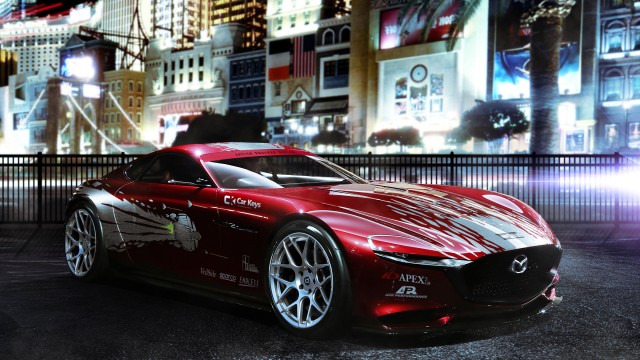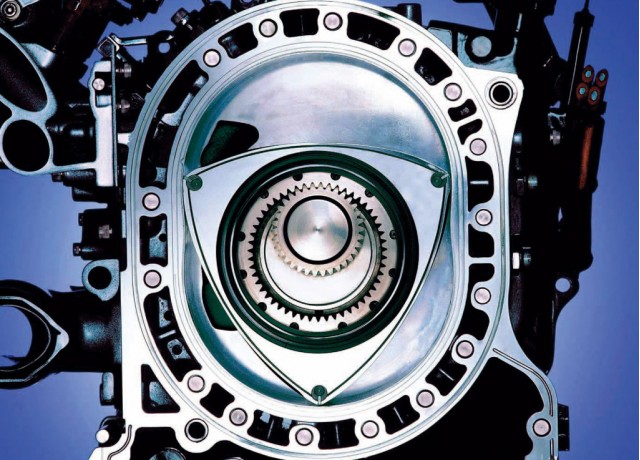Follow Bengt

Mazda RX-Vision Fast and Furious livery
The Wankel rotary, the peculiar pistonless internal combustion engine design that Mazda built so much of its heritage around, may see a resurgence after all.
Earlier reports and remarks from Mazda executives have suggested that while the rotary will make a comeback, it will be relegated to what’s essentially an emergency generator—a range extender for a plug-in electric vehicle that’s expected for the U.S., among other markets. But a report from last week puts the rotary potentially on a higher stage in some versions or vehicles.
DON'T MISS: Mazda announces electric lineup, rotary range extender
Ichiro Hirose, Mazda’s managing executive officer for powertrain development, recently told Australia’s Drive that the project is no longer a single powertrain layout for one vehicle but a flexible platform that could be used to configure various levels of electrification around the globe for the smaller automaker, which has limited development resources compared to other big global automakers.
“What we intend to do is that with this combination you can vary the amount of battery and also the amount of fuel tank supply,” Hirose told Drive. “What that allows us to do is, depending on the ratio between the two, is that we can have a derivative that can work more like a plug-in hybrid.”
CHECK OUT: Will EV Range Extenders Give Rise to a Rotary Renaissance?
The executive said that Mazda has made a breakthrough with its rotary engine that may allow it to be used as more than just a range extender in the future. That includes new ways to curb the emissions involved in this challenging engine design’s startup conditions, and there’s a hint that the strategy could involve spinning the rotary up ahead of time, perhaps only operating it in a certain rev range.

Rotary engine
Hirose used the term XEV to refer to some combination of the rotary range extender and electric drive system. With flexibility built into the platform, some versions could have only a series-hybrid setup, perhaps with the rotary used solely as the range extender, somewhat like the BMW i3 REx. Others, he hinted, could be more like the system used in Toyota hybrids, mixing in parallel-hybrid operation and making the motor supplemental to the internal-combustion engine at higher speeds.
READ MORE: Mazda rotary engine may find new life in self-driving Toyota e-Palette project
In either case, the U.S. is almost certain to get a vehicle that places perhaps more emphasis on its charging port than its fuel tank. Masashi Otsuka, Mazda’s North American VP of R&D and design, confirmed to Green Car Reports recently that a significant amount of research and development work has been done in the U.S. on what he termed a range-extended drive system with the rotary.
Otsuka said that we’re likely to see the technology in a prototype vehicle, positioned for the U.S., before the end of the year. So we may not have to wait long before we can hear a new rotary run again—if only once in a while.